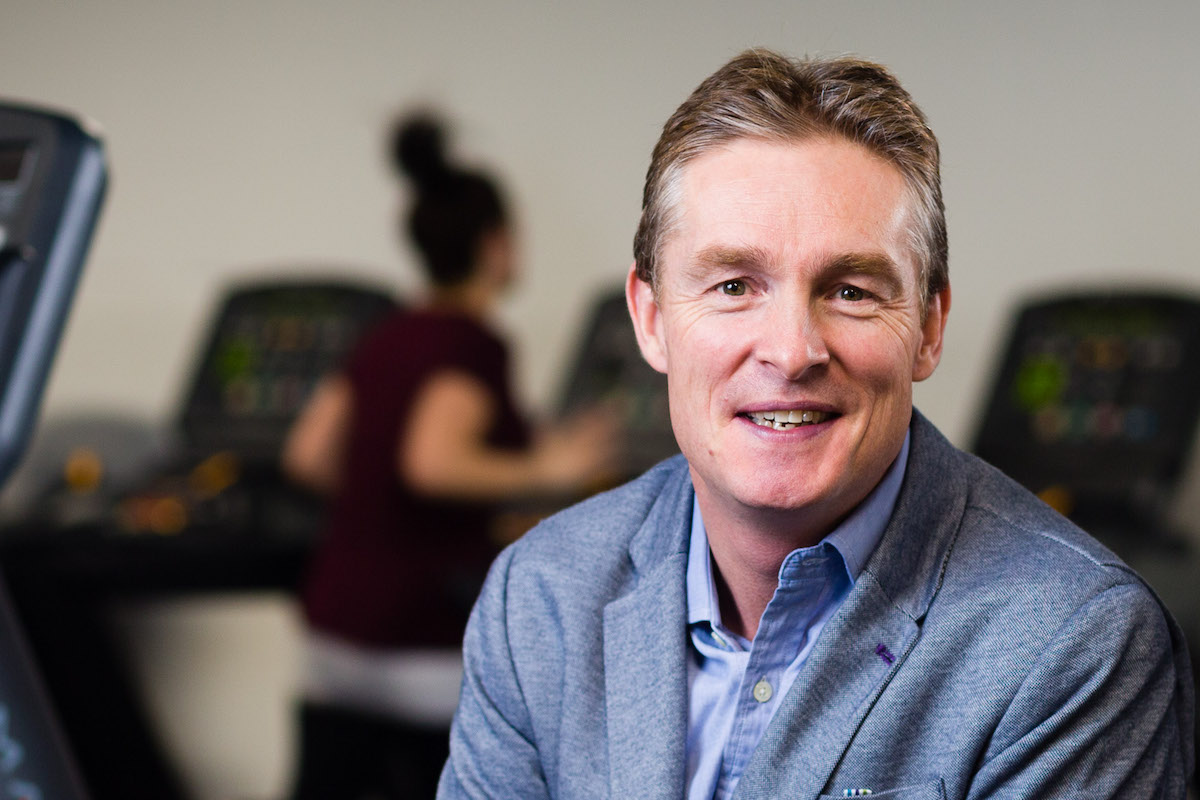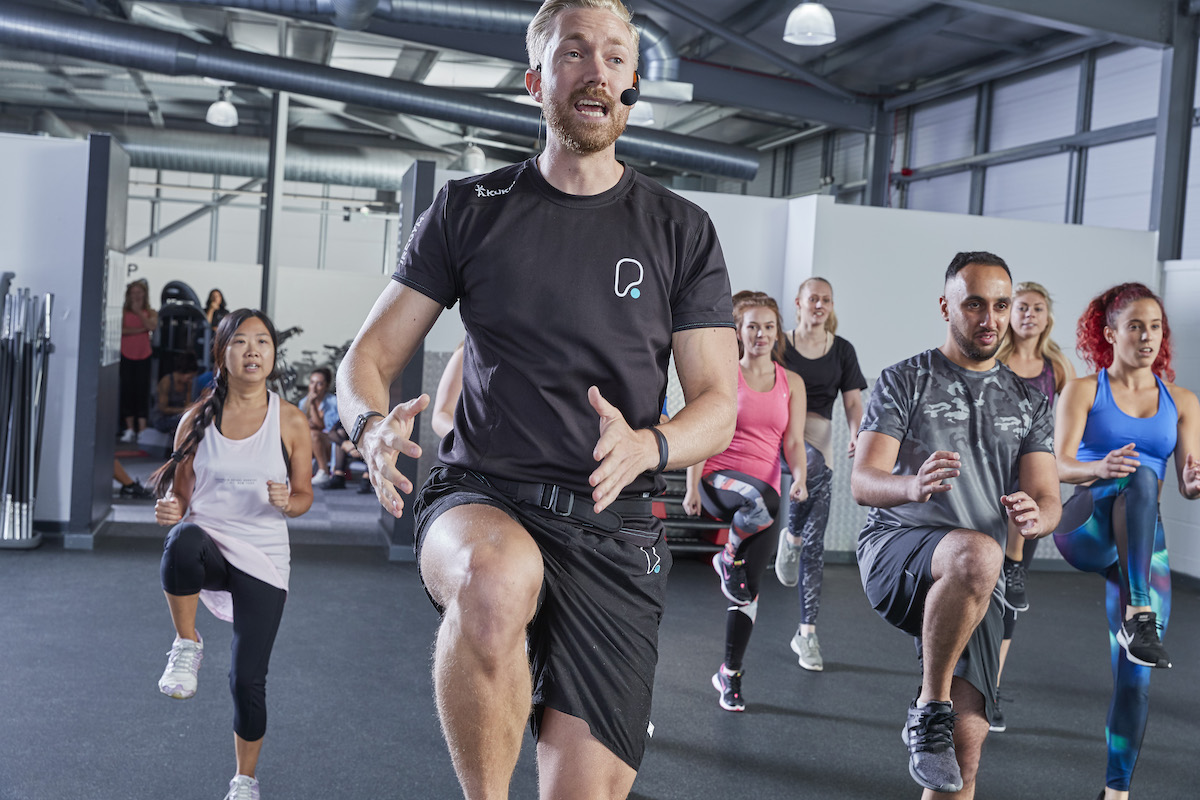Leadership & Strategy
Article
It’s The Small Things: PureGym CEO Humphrey Cobbold

From the value of really listening to your staff to spending 15 minutes at the end of each day identifying priorities for the next day, PureGym CEO Humphrey Cobbold shares his approach to thinking small in pursuit of business improvement.
This interview featured on “It’s The Small Things”, a Be the Business podcast series providing the inspiration small and medium-sized companies (SMEs) need to take a step-by-step approach to business improvement. Hear Humphrey’s interview, and others, by subscribing on your favoured podcast platform.
- Apple: https://apple.co/32BNrAn
- Stitcher: https://bit.ly/30DXovu
- Spotify https://spoti.fi/2JKvDum
- Acast: https://bit.ly/2GjU0hz
PureGym shook up the fitness industry. Can you tell us how?
 In the early days, when Peter Roberts, the founder, was thinking about setting up PureGym, industry incumbents said people in the UK don’t want a low-cost gym – they want fluffy towels and swimming pools and all these extras. Really what the incumbents meant is, we’ve been able to charge a premium for giving customers these things and people have accepted it.
In the early days, when Peter Roberts, the founder, was thinking about setting up PureGym, industry incumbents said people in the UK don’t want a low-cost gym – they want fluffy towels and swimming pools and all these extras. Really what the incumbents meant is, we’ve been able to charge a premium for giving customers these things and people have accepted it.
The incumbents also believed that people wanted to sign up to a 12-month contract. That turned out to be absolute rubbish. No one ever wakes up in the morning and says: “Today I want to sign a 12-month contract,” for anything. That’s a construct of a business model.
What Peter had the courage to do was to raise some money and say, I think this might work in the UK. And he went out and made it happen. It took the industry three or four years before they started taking what he had done seriously. And by then it was too late for them to do much about it, because PureGym was up to 40 or 50 sites.
So if you’re an incumbent, you need to watch out, because you might not understand what the disruptor’s doing. I think that was absolutely the case in the fitness industry with Wiggle and PureGym.
Wiggle was just as disruptive wasn’t it?
Wiggle is a business that always did things people said wouldn’t work. For example, people said you have to go to a bike shop to buy bike gear, because people need to try things on. Turns out you don’t.
People said, you have to go to a bike shop to buy bikes. Turns out you don’t. A lot of people buy bikes unseen online, because you can measure specifications so easily. We were selling 12, 15, 18,000 bikes a year online in boxes sent out to people all over the country.
People said, you can’t buy a triathlon wetsuit online. You have to go to a store and try it on and, of course, turns out you don’t. Wiggle is now the biggest seller – by some margin – of triathlon wetsuits in Europe, and possibly the world.
I don’t know if you’ve ever tried on a triathlon wetsuit in store – it can be a really unpleasant experience. You go into a store, you go behind some curtain, you struggle to put it on and then you walk out onto the shop floor and say, “do I look good in this?” Well of course you don’t, you’re a middle-aged bloke in 5mm of neoprene.
So, quite early on, Wiggle found that they could do quite a lot of counter-cultural or counter-normal things. Most disruptive businesses have some sense of that early on, but they learn it as they get going. Most businesses don’t start out intending to be disruptive, but they learn something and keep doing it.
In both roles at Wiggle and PureGym, you’ve walked in as someone who’s going to lead the next stage of growth. What kind of plan did you have for the first three, six, 12 months?
When you’re going into a business that’s already successful, the most important thing to do is to button your lip and listen carefully because there’s an awful lot that’s going right. To go in with pre-formed views, or thinking you already know the answer, is a mistake. Some people walk into a room and say, quick, ask me a question, I’ve got a wonderful answer. As a new chief executive going into a business, you need to be the complete opposite of that.
There are probably three things I look to really understand in the first few months.
1. Strategy. Where are we looking to try to get to? What path are we on? How far off the path are we? What are the strengths of our business model?
2. Operational detail. On a day-by-day basis, how does the business tick? In the case of gyms, how does each gym work, how do we market to people, how do we sell to people?
3. Red flags. Which areas aren’t working quite right? And are you exposed to risks that might damage the business? In fast-growing businesses, this is often technology
As digital-only business, what challenges did you identify at Wiggle in the first few years?
You obviously have fewer personal interactions with customers in an online business, but that doesn’t mean that you don’t think carefully about every step of the customer journey, both for purchase decisions and more broadly. At Wiggle we thought about what people saw when they came to the website, how they found the product they were looking for, how the purchase journey worked, how we helped them with elements on that journey, how we gave them multiple payment mechanisms and delivery options. You try to replicate human interactions at every point.
We realised that the moment of truth for Wiggle customers was not when they were buying a new pair of bike tyres from us, it was when they trained or raced with those tyres. That’s when you really connect with customers, not at the point of purchase. After that, we started to invest in sponsoring events in the UK and around the world: triathlons in Japan, road races in Australia. We made sure our commercial and transactional relationship with customers was efficient, but the real connection was through our presence at events and experiences.
Have a look at some of our other podcast interviews:
With website-only businesses there’s a desire to constantly change things. What’s worth tinkering with and what’s not?
You have the opportunity to test new things all the time, cycle through them and choose the best option each time. The beautiful thing about online is you can change every single price on every product in every currency at the push of a button. It’s interesting how often things you thought were going to work don’t, and things you didn’t realise were going to be important to customers surprise you.
I prefer to listen to what customers are telling us and look at their behaviour rather than just research. Watching how tens of thousands of customers behave them is much more powerful than asking them. Their choices guide you, rather than the other way round. This drove three other important changes we made.
1. We introduced product reviews. It became the single most valuable content on the site. I would hear members saying, “I wouldn’t buy anything if I hadn’t read a review on Wiggle”
2. We had certified reviewers who could respond to customer questions. That’s real engagement when customers are responding to customers more quickly than we could
3. We added little product images next to the text in the drop-down menu when people were searching. Click-throughs from searches went up to two or three-fold
What kind of problems have you encountered with resistance to change?
Most people say they want to embrace change, but many people struggle to actually do it. The trick with change involves being as open as possible about what’s working in the business, what’s not. I’m in an office at PureGym, but the door is always open and I’m usually walking around the floors. At Wiggle, I sat in an open plan office, right in the middle. I want to make myself as accessible as possible, so people could overhear most of the conversations I was having or come and ask me questions.
It’s about making yourself accessible and being ready to respond to people if they have questions. If people understand why we need to automate or develop something in a particular way, they’re much more likely to be on board, than just being told what they’ve got to do. It’s about explaining the why – it’s much more important than explaining the what. If you don’t get the sense of direction right for people, it’s very hard for them to know they can change with confidence.
Explaining the why is much more important than explaining the what. If you don’t get the sense of direction right for people, then it’s very hard for them to know they can change with confidence.
How do you ensure PureGym remains low-cost but offers high value?
 When people walk into our gyms we want them to say, “this is better than I expected for £19 a month,” not, “ooh, I can see why I’m saving money”. As such, we think about where we can give a genuinely good experience to people but cut out everything that’s superfluous from that experience.
When people walk into our gyms we want them to say, “this is better than I expected for £19 a month,” not, “ooh, I can see why I’m saving money”. As such, we think about where we can give a genuinely good experience to people but cut out everything that’s superfluous from that experience.
We’re now trialling gyms without TV screens. Most members bring their own phones and headphones so why are we putting fifteen screens with pop videos in there? It’s not great content, we’re not offering Sky TV or anything – that’s categorically not part of the product. And so far we’ve had zero people ask, “where have the screens gone?”.
It costs us money if people turn on showers and just leave them on. So we use push buttons where you typically get 30-45 seconds of hot water and then the water stops. That means people use about a quarter of the water they otherwise might use. And again, people accept that as part of the model. There are bigger items too, we don’t do swimming pools or second-rate cafes – there’s a Costa or Starbucks on every street corner. If you want a coffee, bring one with you. We don’t think that’s what people come to us for.
As a leader, how do you make sure you give yourself the time to step back and focus on the business, not just in it?
I keep a list of items that I need to give some time and attention to, calls I need to make, things I need to follow up on. One set of immediate items and one set of longer term “thinky” items as I call them. I sit for 10-15 minutes at the end of a day and think. Am I clear about my priorities for the next day? The important thing is to unburden yourself with things you’ve got in the back of your mind, which is why I write things down, so I don’t forget anything.
I actively look to carve out days away from the office – usually about half a day every fortnight – to read documents and think. I can still do all the phone calls and emails, but it creates a little more separable time where I can stand back. You have to be quite disciplined about it. I’m accountable for several hundred colleagues, two hundred gyms and a million members. I take that quite seriously and I want the business to progress. That won’t happen by not being on top of it.